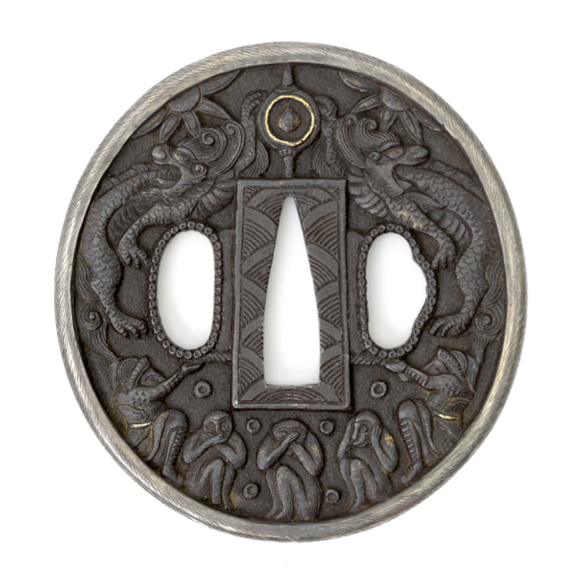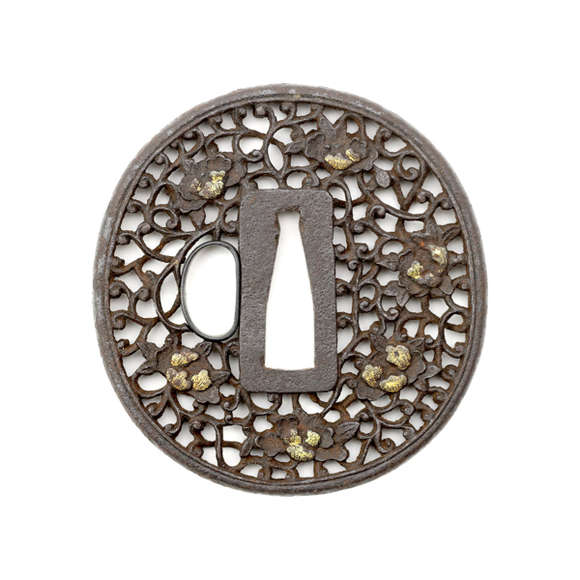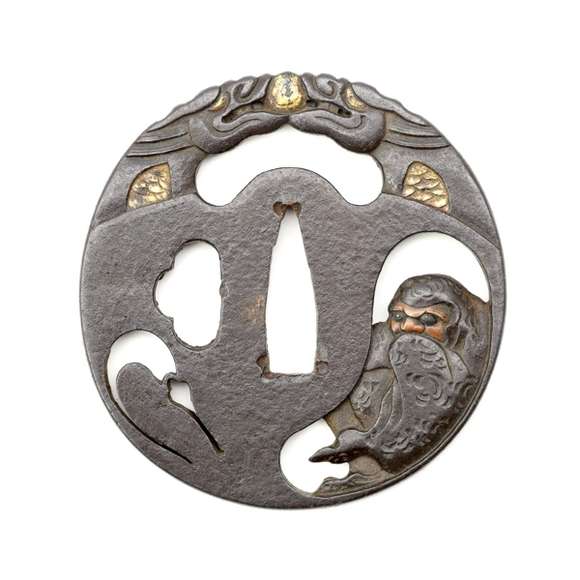Language: Japanese
Description
Aoi-gata (葵形) literally means "hollyhock shape". This style of tsuba was since ancient times mounted on tachi (太刀), large swords that were worn edge downwards, slung from a belt, mainly by cavalry. It is also known as tachi-mokkō-gata (太刀木瓜形) or "Tachi cross shape".1
Often, there is what Westerners would call a heart shape in each corner. These are called inome (猪目) or "boar's eye". It refers to the bravery with which a wild boar tends to charge its attacker.

Three tachi style tsuba in aoi-gata.
Left: A classic example, with no hitsu-ana, apertures for by-knife and hairpin.
Middle: An Asian export guard hitsu-ana indicating it was meant for handachi, or "half tachi" mounts.
Right: A nanban example, with Chinese-inspired openwork and Japanese hitsu-ana.

A tachi sword. Metropolitan Museum, New York. Accession number 07.109.5.
Blade 13th century, by Naganori. Mountings 18th to early 19th century.
Gift of the family of Dr. Francis E. Doughty, 1907
Notes
1. Markus Sesko; Koshirae, Japanese Sword Mountings, Lulu, Inc. 2014. Page 78.






